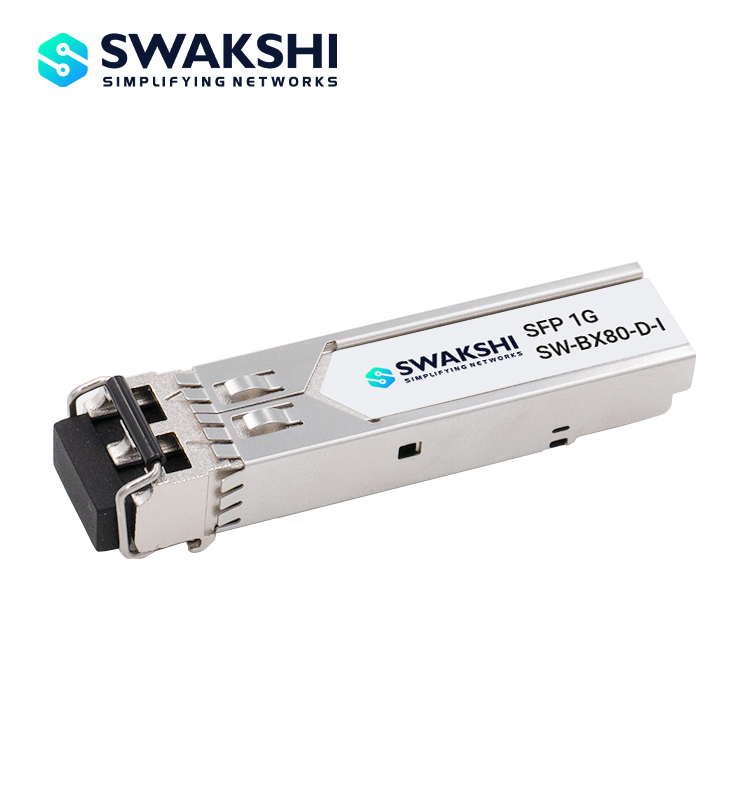 As the global demand for faster, more reliable internet access continues to surge, Fiber to the Home (FTTH) has become the backbone of modern broadband infrastructure. Among the key components enabling FTTH success is the Passive Optical Network Small Form-factor Pluggable, commonly known as the PON SFP This compact but powerful module plays a central role in simplifying network expansion, reducing costs, and enhancing overall service delivery. For networking professionals, understanding the importance of PON SFP is critical to designing scalable and future-proof fiber networks.
As the global demand for faster, more reliable internet access continues to surge, Fiber to the Home (FTTH) has become the backbone of modern broadband infrastructure. Among the key components enabling FTTH success is the Passive Optical Network Small Form-factor Pluggable, commonly known as the PON SFP This compact but powerful module plays a central role in simplifying network expansion, reducing costs, and enhancing overall service delivery. For networking professionals, understanding the importance of PON SFP is critical to designing scalable and future-proof fiber networks.
What is a PON SFP?
A PON SFP is a pluggable optical transceiver used in Passive Optical Networks. Unlike standard SFP modules that are often deployed in point-to-point connections, PON SFPs operate in point-to-multipoint networks and are designed to support protocols such as GPON (Gigabit Passive Optical Network), EPON (Ethernet Passive Optical Network), and XG-PON (10 Gigabit-capable PON). These modules integrate both transmitter and receiver components and are typically plugged into an OLT (Optical Line Terminal), enabling data distribution to multiple ONTs (Optical Network Terminals) through optical splitters.
How PON SFP Works in FTTH Deployments
PON SFP modules form a crucial part of the FTTH architecture by acting as the bridge between the service provider’s core network and end-user locations. The architecture begins at the OLT, which houses PON SFP modules. These modules transmit downstream data and receive upstream signals from end users via optical splitters. This setup reduces the amount of fiber needed by allowing a single optical fiber to serve multiple premises. In essence, the PON SFP enables efficient fiber distribution without requiring dedicated lines for each connection, making FTTH rollouts significantly more economical and scalable.
Key Benefits of Using PON SFP in FTTH Systems
One of the primary advantages of PON SFPs is their seamless integration into existing switch or OLT equipment, allowing service providers to scale networks without overhauling infrastructure. These modules are cost-effective, offering high performance while occupying minimal space. In addition, their low power consumption makes them ideal for energy-efficient deployments. Because PON is a shared medium, the use of PON SFP also supports higher bandwidth per fiber strand, enabling longer reach and improved signal quality over greater distances, often up to 20 kilometers without amplification.
PON SFP vs Traditional Optical Transceivers
While traditional SFP module are designed for point-to-point communication, PON SFPs enable point-to-multipoint connectivity. This fundamental distinction makes PON SFP more suitable for residential and commercial fiber deployments, where multiple endpoints must be served from a central point. Traditional SFPs require one transceiver per connection, which drives up cost and complexity. In contrast, a single PON SFP can support dozens of ONTs, drastically reducing infrastructure requirements.
Real-World Applications and Use Cases
Telecom companies and ISPs around the world use PON SFP to deliver high-speed fiber services to homes, businesses, and institutions. In urban environments, PON SFPs support gigabit internet access in multi-dwelling units without extensive rewiring. In smart cities, these modules are instrumental in powering IoT networks and municipal surveillance systems. Universities and large campuses also utilize PON SFPs to efficiently distribute bandwidth across wide geographic areas, minimizing operational costs while ensuring consistent performance.
Challenges and Compatibility Considerations
Despite their benefits, PON SFPs come with compatibility challenges. Not all modules work interchangeably across vendor platforms due to proprietary firmware restrictions and signaling standards. Choosing the wrong module may result in poor performance or outright failure to connect. Additionally, PON types such as GPON and XGS-PON differ in wavelength and data rate, making it crucial to match the SFP with the correct optical specifications and power budget for the intended deployment. Network engineers must consider distance limitations, temperature tolerances, and connector types when selecting a PON SFP.
Choosing the Right PON SFP for Your Network
To select the appropriate PON SFP, start by identifying the PON standard required—GPON for standard residential broadband, XGS-PON for higher-speed services, or EPON for Ethernet-based solutions. Evaluate the optical budget to ensure it aligns with your network reach and splitter configuration. Confirm compatibility with the OLT equipment and verify whether the module is pre-coded for specific vendors or requires customization. Trusted brands and OEM-certified modules may offer better long-term reliability and support, particularly in mission-critical environments.
The Future of FTTH and the Role of PON SFP
As broadband consumption continues to climb and technologies like 8K streaming, cloud gaming, and virtual reality gain traction, FTTH networks must evolve to meet growing demands. The industry is shifting from GPON to XGS-PON and even 25G PON standards, promising higher bandwidth and greater density. PON SFP modules are evolving in parallel, offering enhanced speed capabilities, better energy efficiency, and improved interoperability. As a result, they will remain essential components of next-generation FTTH infrastructures.
Conclusion: Why PON SFP is a Smart Investment for FTTH
PON SFP modules provide a powerful yet cost-effective solution for expanding fiber networks without sacrificing performance or scalability. For ISPs, telecom providers, and network engineers, leveraging PON SFP technology ensures efficient FTTH deployment and prepares networks for future growth. As fiber continues to replace legacy copper infrastructure, adopting the right PON SFP strategy today can significantly streamline operations and elevate service quality tomorrow.
Comments on “Why PON SFP Is Crucial in Modern FTTH Systems”